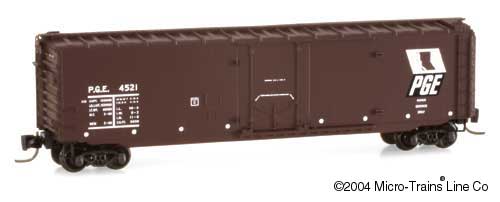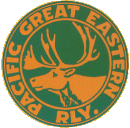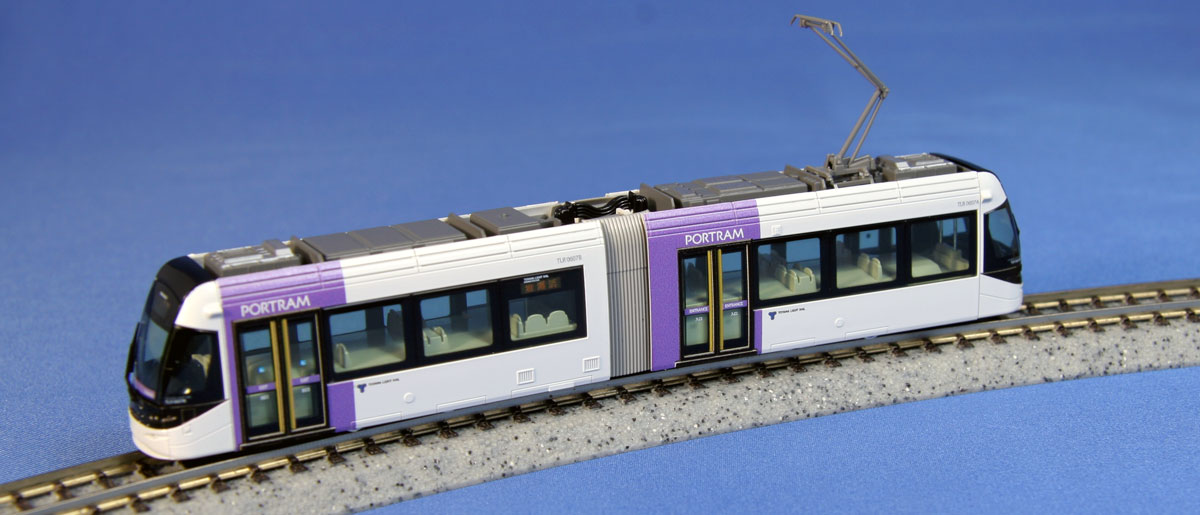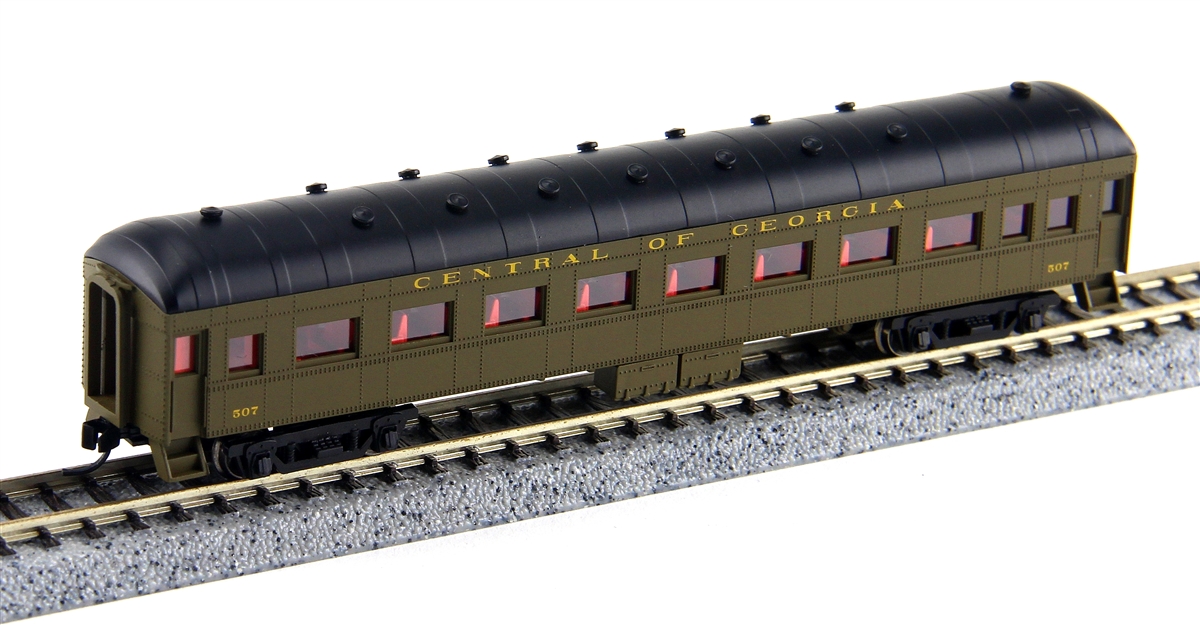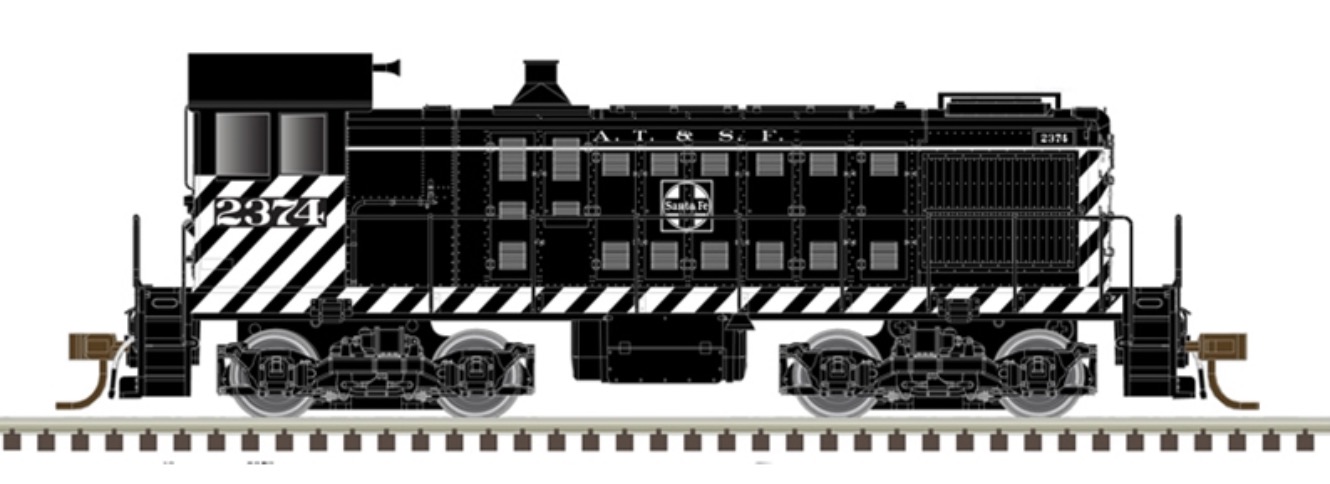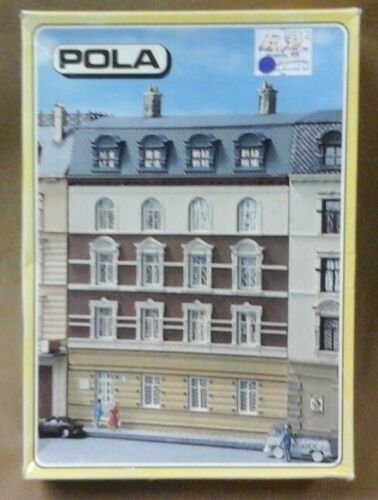Prototype History: The Pullman Standard or PS-1 design was one of the most popular and was widely used by North American railroads. These boxcars were built beginning in 1947 and share the same basic design, with certain elements such as door size, door style or roof type varying among the different railroads and production years. When production of these cars ceased in 1963, over 100,000 had been produced.
The original PS-1 measured 40 foot in length, but Pullman Standard also offered 50′ and later 60′ boxcars – also with the PS-1 designation.
The original PS-1 measured 40 foot in length, but Pullman Standard also offered 50′ and later 60′ boxcars – also with the PS-1 designation.
Road Name History: PGE launched in 1912 with a 12 mile line from North Vancouver, British Columbia to Horseshoe Bay where they picked up another 30 mile line reaching a point just north of Squamish. Six years later, the Province of British Columbia bought the railroad. By 1921, they had built north as far as Quesnel but that was it for the next 31 years. The south end of the line was abandoned in 1928.
In 1951, the Province pushed construction of the PGE north to Prince George in central B.C. and a connection with a Canadian National transcon line. This was the first physical connection with the North American rail network. Prior to that, interchange required car barges. In 1956, a rail link was finally completed to CN and CP in North Vancouver, finally closing the loop. In 1958, lines were built north from Prince George to Dawson Creek (and another CN connection.) In 1971, northward construction resumed to Fort St. John and finally Fort Nelson. This brought the mileage to 1,372 (putting it between Lehigh Valley and Iowa Chicago & Eastern in relative size.) The following year, 1972, the Pacific Great Eastern became the British Columbia Railway.
In 1951, the Province pushed construction of the PGE north to Prince George in central B.C. and a connection with a Canadian National transcon line. This was the first physical connection with the North American rail network. Prior to that, interchange required car barges. In 1956, a rail link was finally completed to CN and CP in North Vancouver, finally closing the loop. In 1958, lines were built north from Prince George to Dawson Creek (and another CN connection.) In 1971, northward construction resumed to Fort St. John and finally Fort Nelson. This brought the mileage to 1,372 (putting it between Lehigh Valley and Iowa Chicago & Eastern in relative size.) The following year, 1972, the Pacific Great Eastern became the British Columbia Railway.
Brand/Importer Information: Micro-Trains Line split off from Kadee Quality Products in 1990. Kadee Quality Products originally got involved in N-Scale by producing a scaled-down version of their successful HO Magne-Matic knuckle coupler system. This coupler was superior to the ubiquitous 'Rapido' style coupler due to two primary factors: superior realistic appearance and the ability to automatically uncouple when stopped over a magnet embedded in a section of track. The success of these couplers in N-Scale quickly translated to the production of trucks, wheels and in 1972 a release of ready-to-run box cars.
Micro-Trains Line Co. split off from Kadee in 1990 to form a completely independent company. For this reason, products from this company can appear with labels from both enterprises. Due to the nature of production idiosyncrasies and various random factors, the rolling stock from Micro-Trains can have all sorts of interesting variations in both their packaging as well as the products themselves. When acquiring an MTL product it is very important to understand these important production variations that can greatly enhance (or decrease) the value of your purchase.
Micro-Trains Line Co. split off from Kadee in 1990 to form a completely independent company. For this reason, products from this company can appear with labels from both enterprises. Due to the nature of production idiosyncrasies and various random factors, the rolling stock from Micro-Trains can have all sorts of interesting variations in both their packaging as well as the products themselves. When acquiring an MTL product it is very important to understand these important production variations that can greatly enhance (or decrease) the value of your purchase.
Item created by: petecduffy on 2019-05-08 21:32:35. Last edited by CNW400 on 2022-03-16 16:25:50
If you see errors or missing data in this entry, please feel free to log in and edit it. Anyone with a Gmail account can log in instantly.
If you see errors or missing data in this entry, please feel free to log in and edit it. Anyone with a Gmail account can log in instantly.


